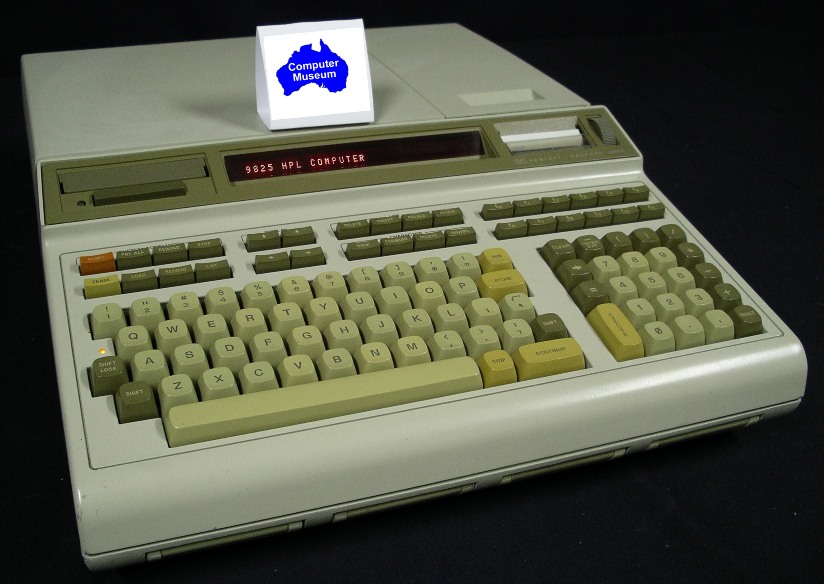Technical Desktops
 |
98x5 Computers Selection: |
| 9825 | |
| Product Number: 9825 | |
| Introduced: 1976 | |
| Price: $5900 | |
| 9825A | Catalogue Reference: 1977, page 528 |
Description:
Donated by: David Loncasty, New South Wales.
The 9825 was HP's first HPL (High-level Programming Language) computer. It replaced the 9820. The 9825 had a full QWERTY keyboard and three expansion slots at the rear of the machine. The 9825 also had a live keyboard which enabled the user to type while the computer was executing other functions. Other built-in features included a 16-character thermal printer and a 248K mini-cartridge tape drive. The 9825 could also access external eight inch floppy disc drives (9885 and later the 9895). Additional capabilties could be added via four pluggable ROM slots at the front of the machine or via the tape drive.
The 9825A came with 6.8K RAM, expandable to 31.4K. The 9825S was introduced in 1979. It came standard with 23.2K RAM and built-in ROMs. The 9825B replaced the 9825A in 1980. It came standard with 23K RAM and internally integrated ROMs for Strings, Advanced Programming, Plotters, General I/O and Extended I/O. The 9825T was also introduced in 1980. It came standard with 62K RAM, all of the ROMs of the 9825B, plus a built-in Systems Programming ROM.
Click here for a detailed look at the 9825 and its many innovations.
Collector’s Notes:
A little over half of the 9825s that we see at the museum will power up and provide a working display. These machines will correctly perform calculations, run programs and address external disc drives and printers. The most common problem of the non-working machines is no display on power up. If you have such a machine, you can confirm that the internal logic of the computer is working by typing "beep" (without the quotation marks) and pressing the EXECUTE key. The machine will beep if it is working. Almost all 9825s are afflicted by non-functioning tape drives. This is usually due to a gooey capstan wheel. Another common problem occurs with the built-in thermal printer. The paper advance mechanism fails on some units, providing output that looks like a series of short horizontal lines.